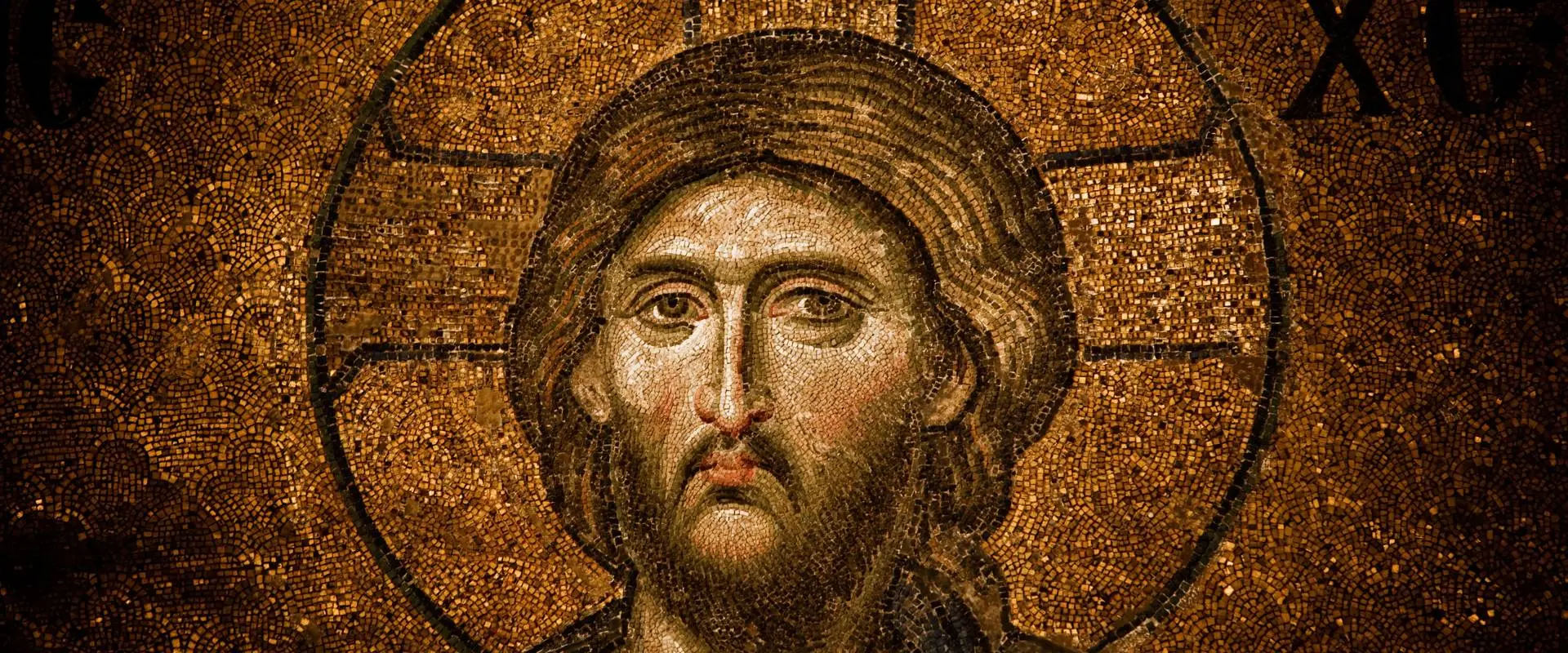- by Carrie Shaw
- on September 9, 2025
Historical Christianity: The Creeds - Part 2
There is no real argument from scholars that the man known as Jesus Christ existed. The reality of the historical Jesus has been well attested by friend and foe alike.
Take, for example, a Roman historian called Tactitus, who lived between 56AD – 120AD. He writes, “Christus, from whom the name [Christian] had its origin, suffered the extreme penalty during the reign of Tiberius at the hands of…Pontius Pilatus…“.
Another early first-century personality, Pliny the Younger (c AD 61–113), when writing to Emperor Trajan about how to deal with Christians, says “[Christians] were in the habit of meeting on a fixed day before it was light…and sing a hymn to Christ as to a god…“
Finally, but not exhaustively, we have the commentary of Lucian of Samosata (c AD 125 – after 180), who was a Greek-speaking satirist and rhetorician from the Roman province of Syria. He was not a Christian – in fact, he was openly critical and mocking of many religions, including Christianity, Greco-Roman paganism, and the philosophical schools of his time. He writes: “[Christians] worship a man to this day – the distinguished personage who introduced their novel rites, and was crucified on that account…“
Most respected modern historians and scholars – including non-Christian and secular voices – affirm the historical existence of Jesus.
Their conclusions are based not just on the New Testament documents – although those are widely regarded as strong historical sources in their own right – but on external, extra-biblical evidence and sound historical methodology.
These sources don’t affirm every theological claim, of course – they don’t try to – but they do support the basic facts of his existence, his death by crucifixion, his influence, and the movement of followers he left behind.
Even scholars who are atheist or agnostic, reject the idea that Jesus was a fictional or mythical figure (a position known as mythicism), considering that theory to be fringe and not supported in peer-reviewed historical scholarship.
As Maurice Casey, a secular historian and Aramaic scholar at the University of Nottingham, puts it: “It is simply not plausible to deny Jesus’ existence. The sources are too many, too early, and too consistent.”
So Jesus Christ really existed. The historical existence of Jesus is well-attested and widely accepted.
But here’s the thing: simply acknowledging that he lived isn’t what defines Christianity. The early church didn’t just affirm his existence – they confessed who he was, and what he did. That’s where the heart of the Christian faith lies.
The Resurrection [of Jesus]
It’s no exaggeration to say that if the resurrection didn’t happen, Christianity falls apart.
No matter how profound Jesus’ teachings or how compassionate his miracles, without the resurrection, there is no victory over death, no assurance that sin has been dealt with, and ultimately, no enduring hope. Without it, Christianity becomes merely a philosophy or moral framework – interesting, perhaps even inspiring – but ultimately powerless to transform or save.
And this is the key shift between affirming Jesus as merely an astonishing historical figure – perhaps even a remarkable and inspiring teacher and role model, to affirming him as the resurrected saviour and Son of God, divinely appointed and sent by God to save the world from their sins.
Scripture teaches that Jesus didn’t come just to show us a better way to live, but as the final and special revelation of Who God is and how we are able to be reunited with Him.
Throughout human history, God had been revealing His means of salvation for humanity, imparting this knowledge through the people of Israel and their prophets. Finally, in the perfect fulness of time, this plan was revealed and consumated fully in His Son, whom was shown to truly be the divine Lord and Saviour by virtue of his resurrection.
As Paul writes in Romans 1:3–4, “…regarding his Son, who as to his earthly life was a descendant of David, and who through the Spirit of holiness was appointed the Son of God in power by his resurrection from the dead: Jesus Christ our Lord.”
To believe in Jesus as Lord and Saviour is to move from admiration to allegiance. It’s not just about respecting his wisdom or being inspired by his example – it’s about trusting who he is, surrendering to his authority, and receiving the life that only he can give.
His resurrection is the divine declaration that he is not just a wise man or moral teacher, but the risen King through whom God has acted decisively to rescue the world.
Jesus Christ: Bodily Raised From The Dead
The resurrection that the early Christians proclaimed – and the one affirmed in the ancient creeds – was not merely symbolic or spiritual. It was a bodily resurrection. Jesus didn’t just “live on” in the hearts and memories of his followers. He physically rose from the dead.
The gospel writers go to great lengths to make this clear. Jesus ate with his disciples after his resurrection (Luke 24:42–43). He invited Thomas to touch his wounds (John 20:27). He was seen, recognised, and spoken with -even as his risen body carried signs of transformation.
I touched on this core teaching of the early church in Part 1, noting that it is not a secondary issue but one of primary importance. To depart from this belief – as in the case of the church I mentioned – is to step outside the core tenets of Christianity: the very things that make Christianity Christian. These are truths that are enshrined in the ancient creeds that defined orthodox Christianity across Christendom, both then and now.
The hope we hold as Christians isn’t vague or abstract. It isn’t some spiritual metaphor about renewal or inner peace. It’s grounded in the firm belief that Jesus truly conquered death – not in theory, but in reality.
And this changes everything.
Because if Jesus was raised physically, then that resurrection is not just about him. It’s a preview and a promise. What God began in Jesus, he intends to do for all of creation – including raising us, bodily, to new life.
This belief isn’t optional. It’s foundational. As Paul wrote to the Corinthians, “if Christ has not been raised, your faith is futile; you are still in your sins” (1 Corinthians 15:17). That’s why the early church enshrined this truth in its creeds. And it’s why Christians across the centuries have clung to it with unwavering conviction.
Jesus Christ: Descended to the Dead
The Apostles’ Creed includes a line that might sound strange to our modern ears: “He [Jesus] descended to the dead” (or, in older versions, “He descended into hell”).
But this isn’t about punishment or judgment but, rather, about the completeness of Jesus’ death.
Jesus didn’t just appear to die – he truly died. He entered into the realm of the dead, just as every human does. He didn’t skip past the grave. He went all the way in.
Some early Christians understood this as Jesus proclaiming his victory over sin and death – even to those already bound by death’s grip (see 1 Peter 3:18–19). Others viewed it as a powerful affirmation of his complete humanity. He didn’t just live as one of us. He died as one of us.
However one understands the details, the meaning is clear: Jesus fully entered into death so he could fully defeat it. He went as low as humanity can go, identifying with us completely even unto death – and then rose again, breaking its power forever.
(As a side note, if that idea raises questions for you about what “hell” really is, you might find my article Three Reasons Why I Don’t Believe In Hell a thought-provoking follow-up).
Jesus Christ, Truly Human: Descended from David
In Romans 1:3–4, Paul writes that the gospel is “regarding his [God’s] Son, who as to his earthly life was a descendant of David, and who through the Spirit of holiness was appointed the Son of God in power by his resurrection from the dead: Jesus Christ our Lord.”
These two truths – descended from David and raised in power – hold together the full identity of Jesus as both fully human and truly divine.
To be “descended from David” meant more than just claiming a famous ancestry. It grounded Jesus in the long-awaited story of Israel – the promise that God would raise up a king from David’s line to rescue and rule his people (2 Samuel 7, Isaiah 11). But it also meant Jesus was a real man, born into a real family, with a body, a lineage, and a history. He was truly human, fulfilling the essential requirement of being made “like his brothers and sisters” so that he could conquer sin and death for all those who shared in his humanity.
The early church took this seriously. They rejected the idea that Jesus only seemed human – a claim that later became known as the heresy of Docetism. Instead, they boldly affirmed that Jesus was fully human. He got hungry. He felt tired. He wept with grief and laughed with friends. He suffered. He died. His humanity wasn’t merely figurative – it was part of God’s redemptive plan.
As the church father Gregory of Nazianzus famously said, “What is not assumed is not healed.” Jesus took on real human nature to heal and redeem it fully.
Jesus Christ: Lord of All
The resurrection wasn’t the end of Jesus’ story – it was the beginning of his reign. For the earliest Christians, the good news wasn’t just that Jesus rose from the dead, but that he ascended into heaven, took his place at the right hand of God, and now reigns as Lord over all. His sacrificial death, while noble, achieved nothing without his glorious resurrection.
At Pentecost, Peter boldly proclaimed, “God has made this Jesus, whom you crucified, both Lord and Messiah” (Acts 2:36). This was the heart of the gospel they preached: not just that Jesus was alive, but that he was enthroned.
This conviction is at the centre of the Christian faith. Jesus is not only risen – he is King. All authority in heaven and on earth has been given to him (Matthew 28:18). One day, every knee will bow before him (Philippians 2:10–11). He now rules with the Father, and the day will come when he returns in glory to judge the living and the dead and to bring about the full and final renewal of all things.
To follow Jesus is to live under his lordship now – to walk in obedience, trust, and hope as we wait for his return and the restoration of everything that is broken.
Looking Ahead: The Spirit and the Church
Jesus didn’t leave his people to figure it out alone. Before he ascended, he promised the gift of the Holy Spirit – God’s own presence dwelling with and in his people. And through the Spirit, he established the Church: a living, breathing community of faith, worship, and mission, entrusted with carrying his life and message into the world.
In Part 3, I’ll explore the role of the Holy Spirit and how the Church fits into God’s unfolding plan.






